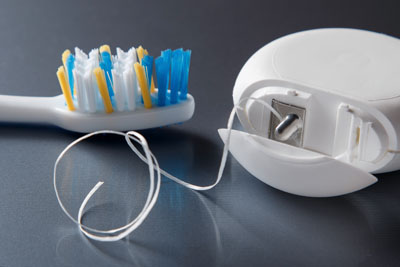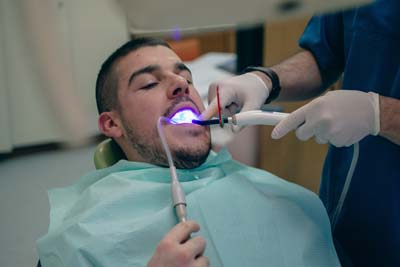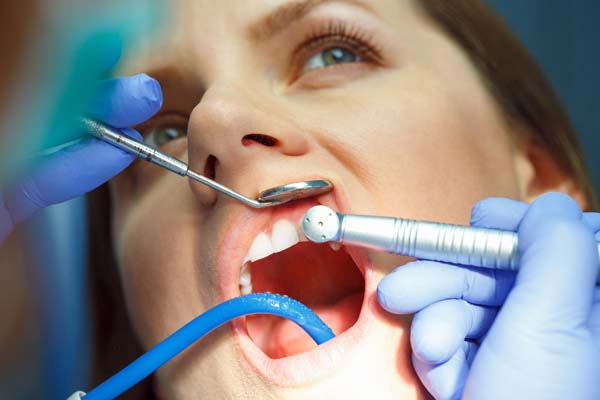Types of Floss and Tips for Flossing: Using Proper Technique

Many people spend lots of time going over the different types of floss and tips for flossing, but both are not equally important. When it comes to keeping the spaces between teeth clean and decay free, nothing compares to flossing regularly while using proper flossing techniques.
Failing to do so leaves teeth vulnerable to tooth decay and gum disease regardless of how often the person brushes. Think of teeth as a piece of wood that needs to be protected from the weather with a special coat. It does not make sense to only coat the front, top, and back, since that still leaves it vulnerable to decay. The sides will eventually begin to rot away, and the piece of wood becomes damaged regardless. The very same concept applies when it comes to keeping teeth decay free. It is best to worry less about the different types of floss and tips for flossing and focus on doing it correctly daily.
How to floss properly
Flossing is not one of those things people instinctively know how to do. Here is a guide that shows the right way to clean the spaces between teeth with dental floss:
Step 1
About 18 inches of floss should be broken off. The floss should then be wound around a middle finger on either hand. Most of the floss should be wound around this finger, while the rest goes around the same finger on the opposite hand. This finger will be used to take up used portions of floss during the process.
Step 2
Keep the floss between a forefinger and a thumb.
Step 3
Slide the floss between two teeth using a rubbing motion. Floss should never be snapped or pushed hard into the gums.
Step 4
Once at the intersection of the teeth and the gum line, curve the floss into a "C" shape against one tooth. Slide the floss gently between the tooth and gum.
Step 5
While holding the floss against a tooth, gently rub its side with it, moving the floss upward and downward against the tooth. This process should be repeated on all teeth, especially those at the back of the mouth.
Step 6
Once a tooth has been cleaned, wrap the used part of the floss against the other finger. Using a dirty piece of floss to clean teeth is not as effective as using a fresh one. Dirty floss is also more likely to leave bacteria behind.
That is the proper way to floss teeth. Following these instructions will ensure the spaces between your teeth remain clean and free of decay. If you find flossing particularly difficult, talking to a dentist is recommended. An in-office demonstration on how to properly use dental floss might be exactly what you need to help form new habits.
Ready to start cleaning your teeth properly? Schedule a consultation with one of our dentists today!
Let's get started …
Request a dental appointment here: https://www.schommerdental.com or call Schommer Dental at (563) 272-2331 for an appointment in our Davenport dental office.
Recent Posts
Vacation Oral Hygiene Cheat Code: VentilationOral hygiene is probably the last thing on your mind when you are planning your vacation. You are likely thinking about warm temperatures, clear skies, refreshing water, sand and fun. However, if you spend too much time enjoying yourself, you will either forget to clean your teeth or simply neglect…
Has the anatomy of your teeth ever crossed your mind, like what makes up the tooth and helps it perform its functions? A tooth consists of the enamel, cementum, dentin, root, and the pulp.When a tooth suffers trauma, especially to the enamel, it becomes prone to cavities, which may degenerate into a severe oral condition…
Regular preventative dental care is important. It can help you get an early diagnosis of potential cavities, so you can focus on giving those areas more attention. Regular dental cleanings can help remove plaque so there is not the chance of hardened plaque buildup occurring. Preventative dental care from a trusted dentist can save you…
Dental bonding is a common dental procedure that repairs damaged teeth (chips, cracks, etc.), fills in gaps between teeth and lengthens teeth that are worn down or naturally too short. Understanding the process that dentists use with dental bonding should help you decide if treatment is right for you. Although each dentist will have their own…


